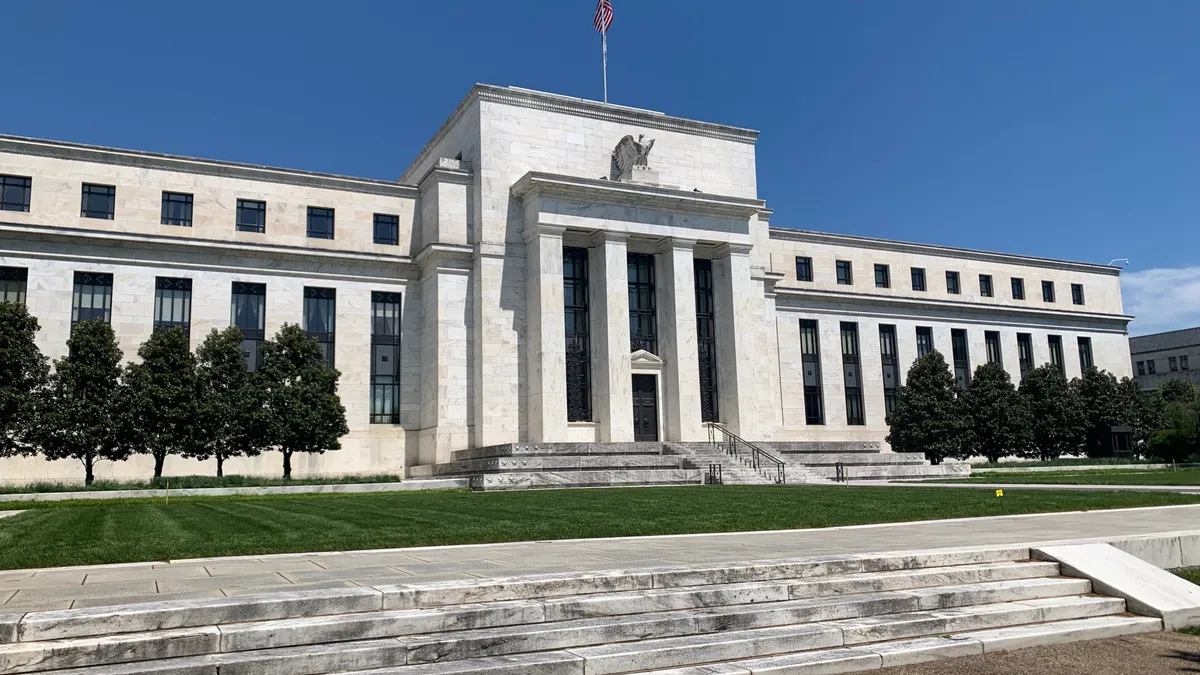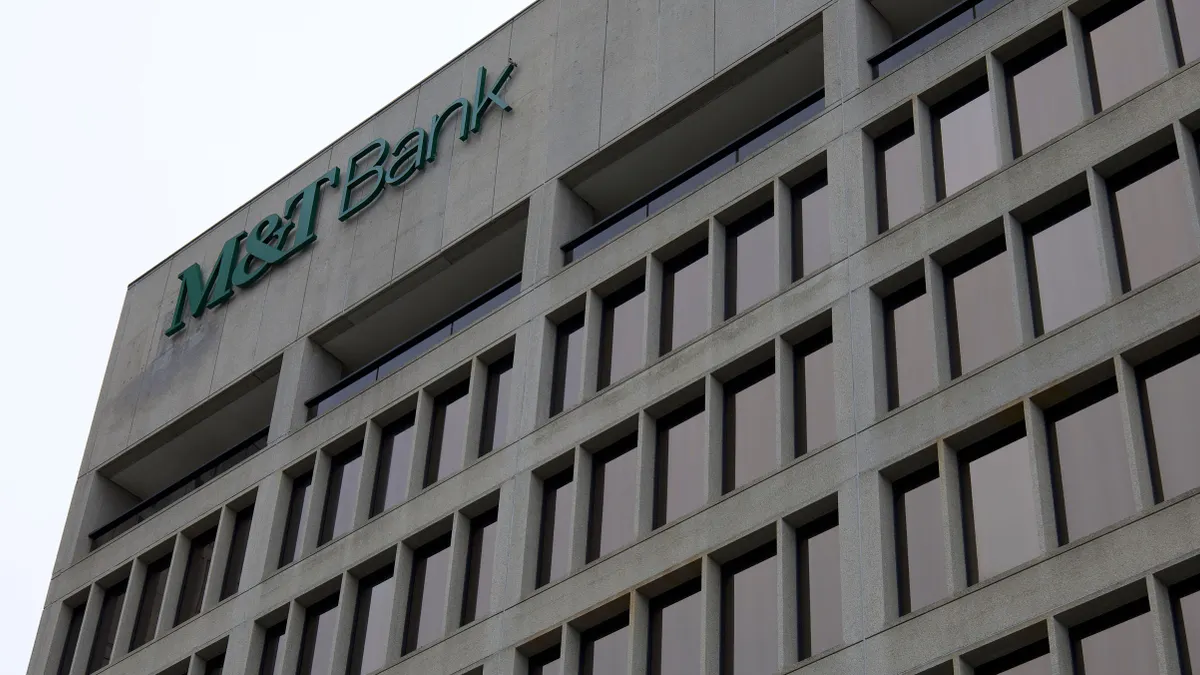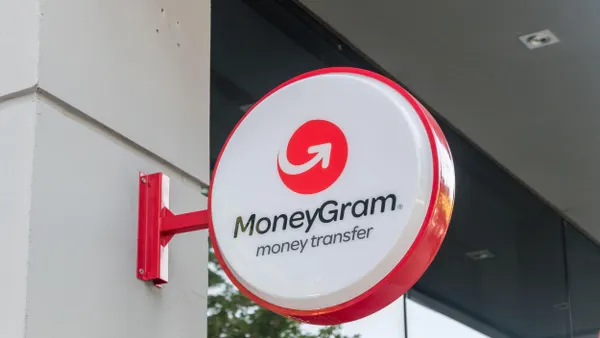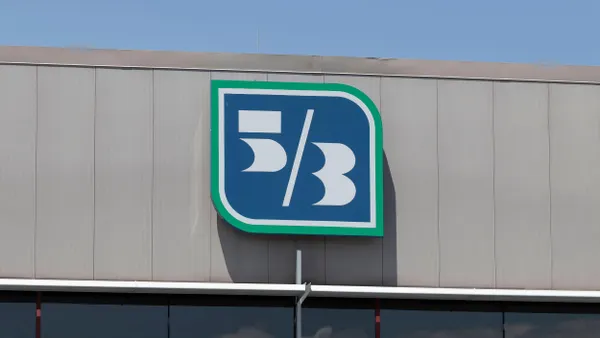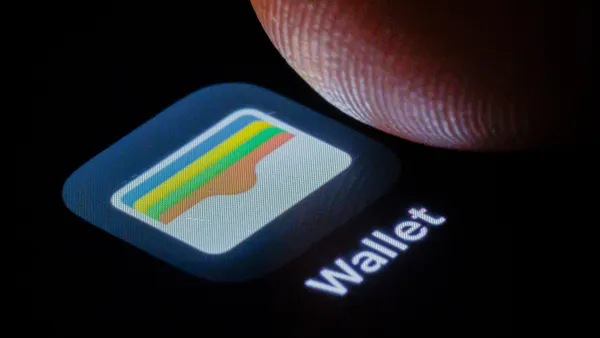Dive Brief:
- "We have an obligation to be on the cutting edge of understanding the technological challenges, as well as the potential costs and benefits, of issuing a [central bank digital currency]," Federal Reserve Chair Jerome Powell said Monday at a virtual panel held by the Bank for International Settlements (BIS). "Because we’re the world’s principal reserve currency, we don't need to rush this project, and we don't need to be first to market."
- Powell’s stance treads a well-worn line — he told a panel at the International Monetary Fund in October he’d rather "get it right" than "be first" in researching and potentially developing a Fed-backed digital coin. But Monday’s comments come as the Boston Fed executive leading the effort to develop CBDC prototypes, alongside Massachusetts Institute of Technology (MIT) researchers, indicated he could unveil some of their work as early as July, Bloomberg reported.
- Leading policymakers, too, have thrown greater support behind CBDC development. Senate Banking Committee Chairman Sherrod Brown, D-OH, wrote Powell this month urging him to accelerate the research. "We cannot be left behind," Brown wrote, according to Bloomberg. Meanwhile, Treasury Secretary Janet Yellen — Powell’s predecessor atop the Fed — told a virtual conference last month "it makes sense for central banks to be looking at" issuing a CBDC.
Dive Insight:
During his appearance Monday, Powell reiterated that he would not proceed with a Fed-issued digital currency without Congress's support.
"I think that would ideally come in the form of an authorizing law, rather than us trying to interpret our law, to enable this," he said, according to American Banker. "You can expect us to move with great care and transparency."
However, James Cunha, the Boston Fed senior vice president leading the prototype effort, has his eye on the clock. He said the Boston Fed and MIT hope to display at least two prototype software platforms meant to move, store and settle transactions made with digital dollars. Researchers from elsewhere will be able to see and build on the code once the prototypes are released, he told Bloomberg.
The unveiling of progress merely aims to show the project's possibilities, Cunha said. "We think it’s important that we not wait for the policy debate because then we’ll be a year or so behind," he told Bloomberg.
The question becomes: Behind whom?
Hanging over the CBDC debate is the specter of several iterations of the "other": perceived competition from disruptors and a digital arms race of sorts with other countries.
When discussions of a potential Fed-backed digital coin ramped up in 2019, lawmakers saw the Facebook-led Libra, now Diem — and other efforts from JPMorgan Chase and Wells Fargo — as a major threat. "The Facebook/Libra proposal, if implemented, could remove important aspects of financial governance outside of U.S. jurisdiction," Reps. French Hill, R-AR, and Bill Foster, D-IL, wrote in a letter to Powell.
Regulatory uncertainty has since slowed Diem's momentum. But other, fully functional currencies — cryptos — have caught fire, with the value of Bitcoin, in particular, jumping nearly tenfold in the past year.
Also at the BIS conference, Bundesbank President Jens Weidmann cautioned Monday that central banks shouldn’t "crowd out" the private sector with their efforts, according to Bloomberg.
Powell on Monday dismissed the idea that the rise of cryptocurrencies are fueling the Fed's further exploration of digital currency — or that any U.S. CBDC would compete against Bitcoin and its ilk.
"Our work on CBDCs is not primarily motivated by the appearance on the scene of cryptocurrencies and stablecoins," Powell said. "Stablecoins may have a role to play with appropriate regulation, but that role will not be to form the basis of a new global monetary system."
One consistently present "other" has been efforts from nations such as China that are testing their own CBDCs. China is piloting a digital yuan in at least four cities. Josh Lipsky, director of the GeoEconomics Center at the Atlantic Council, told Bloomberg the currency could debut at the 2022 Winter Olympics in Beijing, which he added may ruffle feathers if U.S. athletes are asked to use a currency the Chinese government can track.
Card networks, too, have moved to avoid becoming the "other" — left out of the digital equation by a system that potentially could bypass middlemen such as Mastercard and Visa in favor of the Fed. Mastercard last month started issuing prepaid debit cards loaded with the Bahamas' "Sand Dollar" digital currency.
The Fed's digital currency effort has also drawn concern from banking trade groups. The American Bankers Association, for its part, last year called the Fed's digital dollar project a costly solution to a nonexistent problem.
"Rushing anything of this potential magnitude could introduce unintended consequences that threaten the stability of the banking system without contributing meaningfully to economic inclusion," said Steve Kenneally, senior vice president of payments at the trade group, according to Bloomberg.
A CBDC, however, may have the potential to eliminate the days-long delay from when government agencies disburses funds to banks, and banks pass that money on to consumers.
Yellen noted last month that a CBDC could provide powerful assistance to the underbanked. "Too many Americans don’t have access to easy payments systems and banking accounts, and I think this is something that a digital dollar, a central bank digital currency, could help with," she said. "It could result in faster, safer and cheaper payments, which I think are important goals."
Powell, meanwhile, insisted that any Fed-backed digital coin wouldn't make an "other" of paper money.
"A CBDC needs to coexist with cash and other types of money in a flexible and innovative payment system," Powell told a Switzerland-based conference last week.


